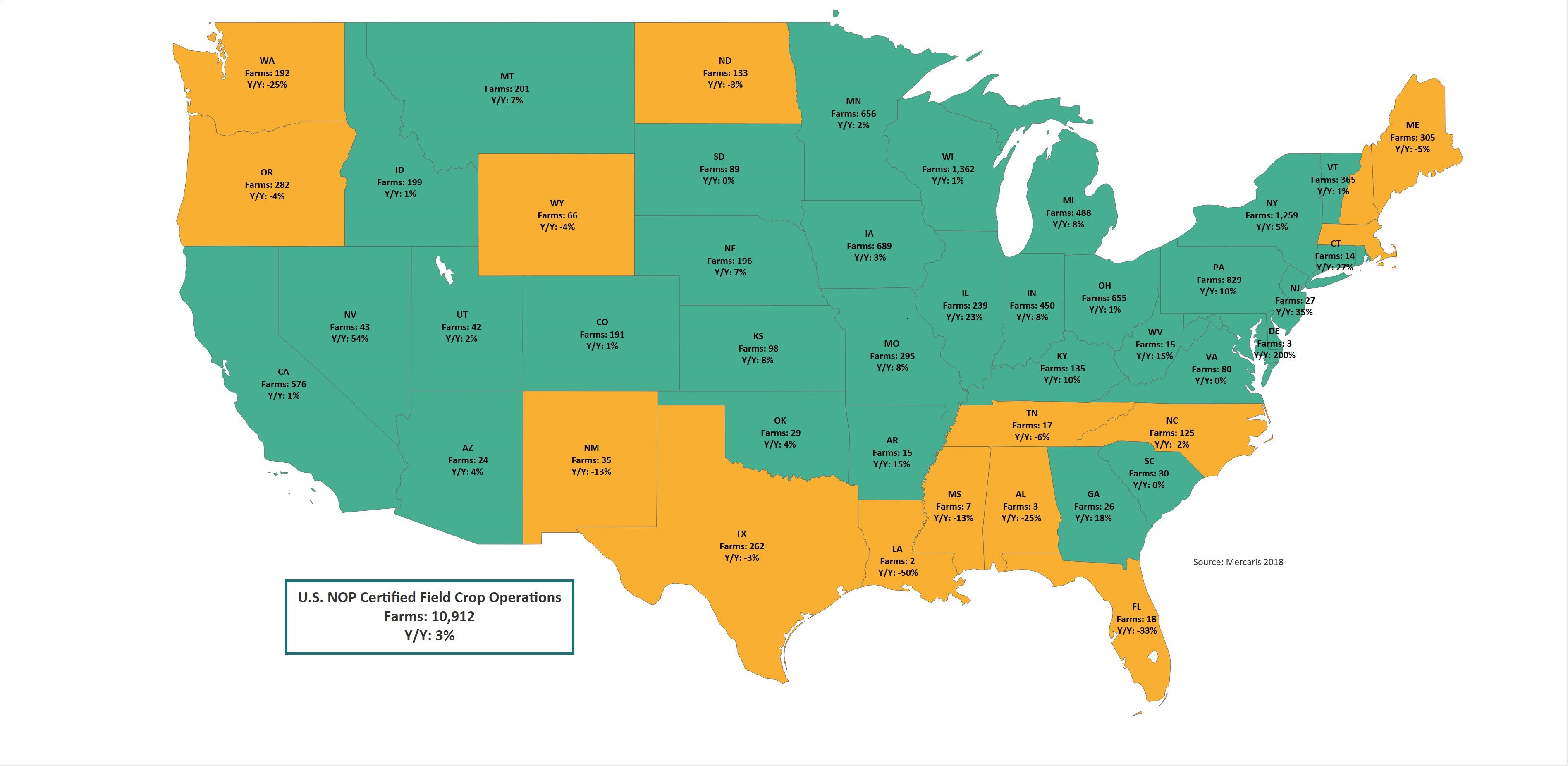By Ryan Koory, senior economist at Mercaris
U.S. certified organic farm operation expansion has outpaced organic acreage according to research conducted by Mercaris for its 2018 Organic and Non-GMO Acreage Report.
Mercaris found that 10,912 farms were certified for organic field crop (corn, soybeans, wheat, oats, hay, and rye) production in the U.S. as of August 2018, an increase of nearly 3 percent from 2017. But while the number of organic farms increased, the number of organic field crop acres saw slower growth with an estimated 2.9 million harvested acres for 2018 and 2019, a 2 percent increase over 2017.
The comparatively slower pace of organic field crop acre expansion is the result of growth along the East Coast and through the Corn Belt, combined with a lack of significant expansion across the High Plains.
The number of certified organic operations in the East Coast and Corn Belt expanded by 4 percent and 5 percent respectively. In 2019, Mercaris estimates that Pennsylvania, Michigan, Missouri, New York, Wisconsin, and Illinois will each add more than 5,000 harvested acres of field crops over 2018. The expansion in organic acreage across the East Coast and Corn Belt appears to be in response to growing livestock feed demand, with the harvested organic corn, wheat, and soybean area expanding by a combined 29,436 acres.
In other sections of the U.S., crop rotations appear to have been the primary driver of organic field crop acreage in 2018/19, particularly across the High Plains. Overall, the region only achieved a 1 percent increase in the number of certified organic field crop operations. In addition to the minimal growth in certified organic producers, the amount of land dedicated to the production of key cash crops declined, with corn and wheat harvested area down a combined 5,260 acres. In contrast, the amount of land dedicated to the production of small grains and dried beans, peas, and lentils expanded by a combined 10,104 acres.
An interesting result of these two factors impacting U.S. organic acreage is the comparatively slower growth in organic area relative to the number of certified operations. With the expansion of organic producers primarily concentrated in the East Coast and through the Corn Belt, where farm sizes are typically smaller, the size of the average U.S organic operation declined this year, down nearly 1 percent to 266 harvested acres per farm. For organic supplies, this means production is responding to demand, as new operations have popped up in areas where organic livestock feed demand is most concentrated.
Overall, Mercaris estimates that a total of 17,648 U.S. operations were certified for organic crop production (field crops plus fruits and vegetables, etc.) as of August 2018. This represents an increase of 460 certified operations, or nearly 3 percent more than Mercaris’ 2017 estimate of 17,188 NOP certified organic operations. Mercaris estimates the amount of U.S. land certified for organic crop production will total 6.5 million harvested acres for 2018, an increase of 2 percent from 6.4 million acres in 2017.





